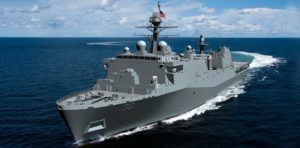
The Senate Armed Services Committee’s (SASC) version of the fiscal year 2024 defense authorization bill favors the Navy procuring 10 new ships, including a new amphibious ship and a submarine tender replacement. The proposed bill is an increase over the Navy’s FY ‘24 request, which seeks $32.8 billion for nine ships including the second Columbia-class ballistic missile submarine (SSBN), two Block V Virginia-class attack submarines (SSN), two Constellation-class frigates, one John Lewis-class oiler and one next-generation submarine tender replacement (AS(X))…

 By
By 









